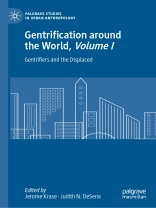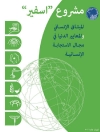Bringing together scholarly but readable essays on the process of gentrification, this two-volume collection addresses the broad question: In what ways does gentrification affect cities, neighborhoods, and the everyday experiences of ordinary people? In this first volume of Gentrification around the World, contributors from various academic disciplines provide individual case studies on gentrification and displacement from around the globe: chapters cover the United States of America, Spain, Brazil, Sweden, Japan, Korea, Morocco, Great Britain, Canada, France, Finland, Peru, India, Indonesia, Pakistan, Syria, and Iceland. The qualitative methodologies used in each chapter—which emphasize ethnographic, participatory, and visual approaches that interrogate the representation of gentrification in the arts, film, and other mass media—are themselves a unique and pioneering way of studying gentrification and its consequences worldwide.
Содержание
Chapter 1: Introduction.- The Americas.- Chapter 2: Brooklyn Revisited: From Blight to Gentrification.-Chapter 3: Gentrification and Ageing in Montreal, Quebec: Housing Insecurity and Displacement Among Older Tenants.-Chapter 4: Forced Removals in Gentrifying Rio de Janeiro and San Francisco: Experiencing Displacement.- Europe.- Chapter 5: Vernacular Gentrification in Malasaña, Madrid.-Chapter 6: “Community Devastation Project:” .- Visualising the Contrary Logics of ‘Regeneration’ through Collaborative Arts Practice-based Research.-Chapter 7: Visualizing Gentrification in Ancoats, Manchester: A Multi Method Approach to Mapping Change.-Chapter 8: “We’re not Moving:” Solidarity and Collective Housing Struggle in a Changing Sweden.-Chapter 9: Pacifying La Goutte d’or, Getting Paris more French: Grounding Gentrification in a Cosmopolitan Neighborhood.- Middle East and Far East.- Chapter 10: Residential Transformations leading to Gentrification: Cases from Istanbul.-Chapter 11: Tourism Gentrification of the Old City of Damascus.-Chapter 12: When Ideology Replaces the Market: Gentrification in East Jerusalem.-Chapter 13: Gentrification, Machizukuri, and Ontological Insecurity: Bottom-Up Redevelopment and the Cries of Residents in Kamagasaki, Osaka.
Об авторе
Jerome Krase is Emeritus and Murray Koppelman Professor at Brooklyn College, CUNY, USA. He has authored or edited several books on urban life, including Self and Community in the City (1982), Race and Ethnicity in New York City (2004), Ethnic Landscapes in an Urban World (2007), Seeing Cities Change (2012), Race, Class and Gentrification in Brooklyn (2016), and Diversity and Local Contexts: Urban Space, Borders and Migration (2017).
Judith N. De Sena is Professor of Sociology at St. John’s University, USA. She has authored Protecting One’s Turf: Social Strategies for Maintaining Urban Neighborhoods (1990 and 2005), People Power: Grass Roots Politics and Race Relations (1999), Gentrification and Inequality in Brooklyn: The New Kids on the Block (2009) and, with co-author Jerome Krase, Race, Class, And Gentrification in Brooklyn (2016).












